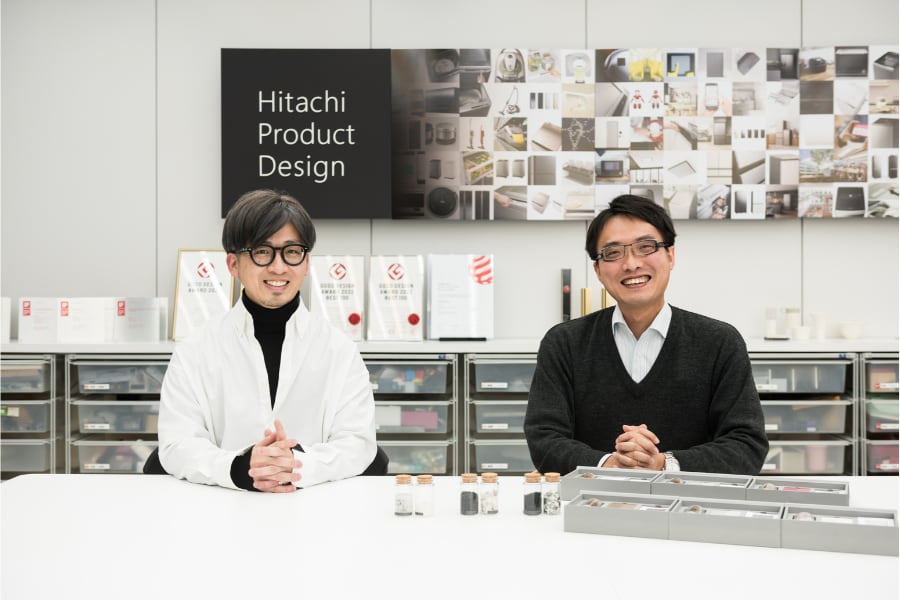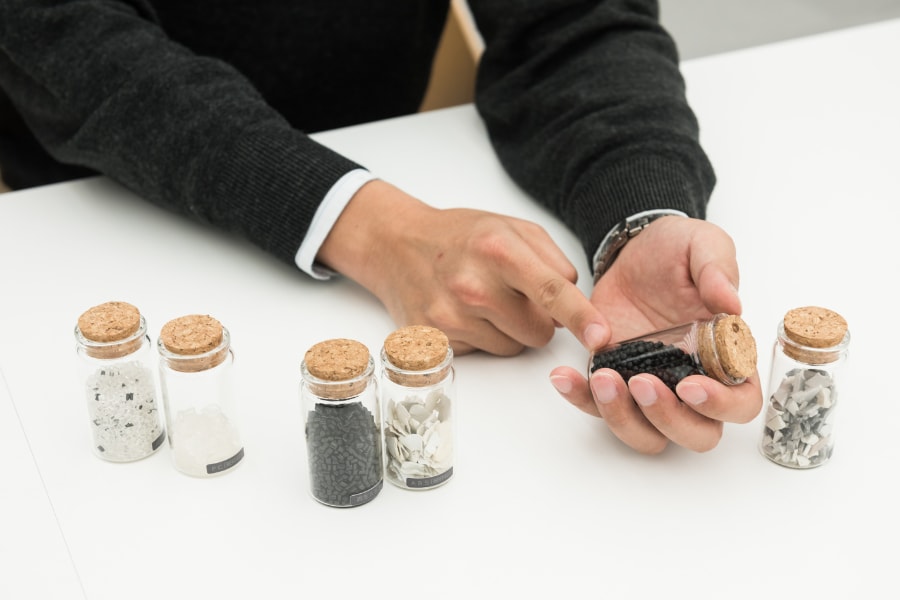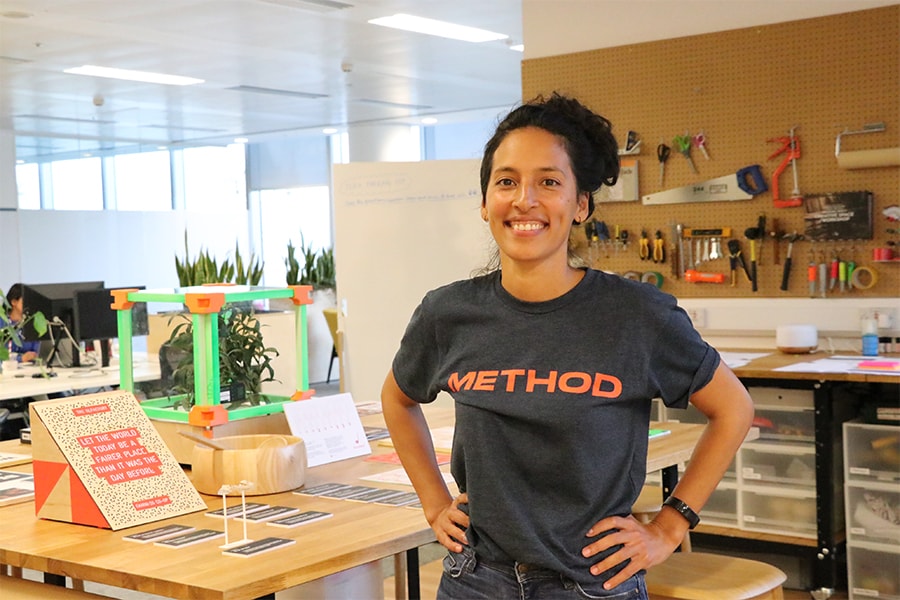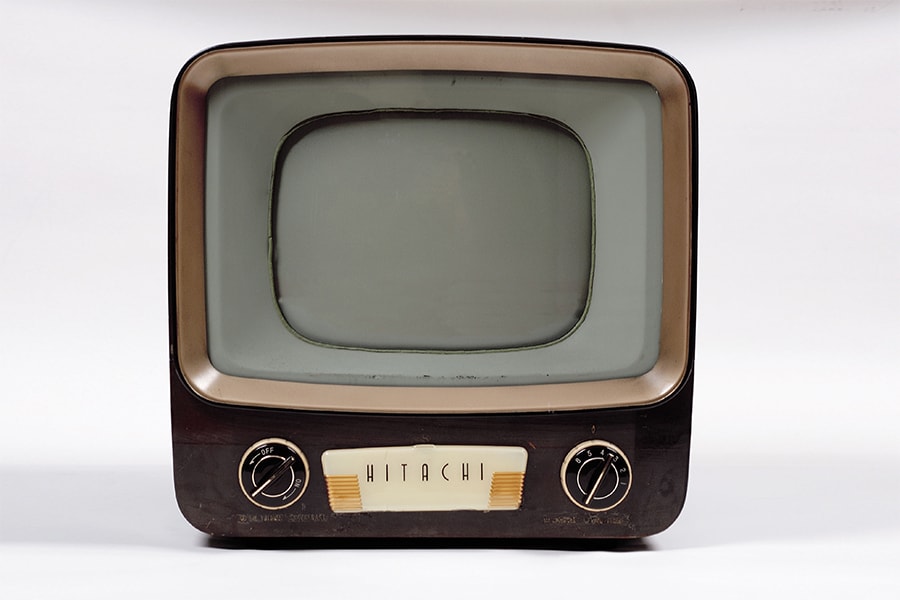A Vacuum Cleaner for the Circular Economy
Aug. 5, 2024
Manami Shimakage

One of the core ideas that will enable us to reach a truly sustainable society is the “circular economy” - a concept in which products are repeatedly recycled to eliminate waste.
Hitachi’s stick cleaner, designated the PV-BH900SK, is one such product developed to be recyclable. The key to its success is understated design and branding that customers have found easy to live with. This vacuum cleaner has been so well received that, in addition to the Good Design Gold Award 2022, it also sucked up prestigious international design awards including an iF Design Award 2023 and a Red Dot Design Award 2023.
We got the inside story from Kotaro Nomura, one of Hitachi’s talented designers.
Going beyond recycled plastic

--How did you end up designing vacuum cleaners?
Nomura: As a designer, I have always wanted to create tactile things that I can hold and feel. I joined Hitachi in 2004 and have been lucky to work on a variety of products, including cellphones and white goods.
Adding value to a product is one of the most important aspects of a designer’s work. We thought we could add value to this vacuum cleaner by tackling its use of plastic. Resource depletion from overuse of plastic and inappropriate disposal are growing social issues. Home appliances have an especially high impact because they use a lot of plastic and are mass produced in large volumes. My role in the project was as the designer responsible for CMF (Color, Materials and Finish).
--Tell us more about CMF design
Nomura: It’s an area of design that focuses on the chromatic, tactile and decorative side of a product. Even if the shape of a product is already set, changing the color, material, or texture can completely change the impression of the product.
In the case of this project, the first challenge was the material. If we continue to use virgin plastic (new material), it will deplete our petroleum resources, pollute the environment for years, and cause other problems, such as plastic in the ocean harming wildlife. It also cannot be burned because it produces large amounts of carbon dioxide.

So, naturally, we wanted to use as much recycled plastic as possible. But I couldn’t get the nagging thought out of my head that simply using recycled plastic wasn’t enough. We had to go further.
Designers teaming up with researchers
--So using recycled materials was a method but not the ultimate goal?
Nomura: Exactly. I was looking for ways to do more for the environment. It wasn’t so much a study of design as it was a study of plastics.
Luckily, our design center is part of our Research & Development Group, so I could work closely with some of our expert researchers who specialize in plastics.

--So research is important then?
Nomura: Absolutely, anyone involved in CMF requires a certain knowledge of materials. But what we have achieved by teaming up with the researchers is not just using recycled plastic - we were able to create a recycled plastic that our customers appreciate.
Not just any old plastic
--What do you mean when you say to “not just using recycled plastic”?
Nomura: Just making something from recycled plastic is not enough to make a meaningful difference, it also needs to become a popular product.
To emphasize the fact that materials are recycled, it can be common practice to use a marbled pattern or plastic with small colored specks mixed in. We made a prototype, but we found that being easily recognizable as recycled plastic also had its disadvantages. Buyers would not pick up the product, saying: “It looks recycled, so it should be cheaper.”

After this, we focused on giving the plastic a greater sense of luxury that our customers would like. We conducted a user survey and found that black conveys a premium feel and helps to increase product desirability. But plain black can also give the impression of being featureless and cheap. So to give it a more attractive finish, we tried to create a deeper “jet black” plastic in addition to a standard black. We thought this would add intensity in color and texture, and provide some subtle variation. However, there was a hurdle to coloring the recycled plastic jet black.
--Why was jet black difficult?
Nomura: Most recycled plastic comes from various products and has a mix of colors, so it will not turn jet black no matter how much black is added. We inevitably end up with a mixture of different colors in the material.
So, with the help of our researchers, we came up with the idea of dying colorless, transparent recycled plastic. Recycled polycarbonate is made from old light covers, highway soundproofing panels, and other things. Since it is colorless and transparent, it can be dyed jet black.

Designing for the circular economy
--So you were able to design a desirable product?
Nomura: Yes, but I still did not think it was enough. Through working with our plastics specialists, I became more and more convinced that we need to think about planetary boundaries - the limits to which the Earth can maintain an equilibrium - and to further devise ways to reuse the Earth’s limited resources. We hit upon the circular economy concept, that is, the repeated recirculation of used materials.
--What innovation did you use to achieve this?
Nomura: In the past, our home appliances were branded with the “HITACHI” logo in metal foil or ink. It is the symbol of the brand, so it had to stand out. However, it is also a problem for recycling. In order to recycle a product, the plastic must be sorted as plastic, and the metal must be sorted as metal. This can be a costly and difficult process. Therefore, we decided on more subtle branding that could be achieved using plastic alone.
Because it didn’t stand out, some people in the company had doubts. Nevertheless, I think we made the best choice by appealing the fact that this is a product that facilitates recycling and helps to realize a circular economy.

--Thank you for an interesting interview. We’ve just time for your final thoughts?
Nomura: In order to embody sustainability, it is also important to encourage users to use products for a long time.
Home appliances are generally considered consumable items - there is no concept of vintage home appliances. There are some second-hand stores, but most people shop there for the low price rather than the enduring product value.
However, good design raises the value of the product itself. Creating attractive products that people want to use for a long time is another step toward a sustainable society. This is something I think a lot about when I’m working on a design.
Researcher’s perspective: What it’s like working with a designer
Ryotaro Shimada is a plastics researcher who was an integral part of this project. We asked him to reflect on his experience collaborating with the designers.

“I learned that good design is important to increase the use of recycled plastic. Making use of the different colors of recycled materials is an idea that only a designer would come up with. It was stimulating to combine our technical knowledge with the designers’ inspiration to tackle a difficult problem.”

“Recycled plastic has many limitations in terms of strength and cost compared to virgin material. It is a challenge that is inspiring people, both at Hitachi and elsewhere, and momentum is building in the industry to develop more home appliances from recycled plastic. I hope to support and nurture this movement through our materials expertise in order to help realize a circular economy.”



